 |
surfresearch.com.au
the catalogue #353 |
| home | catalogue | history | references | appendix |
|
| 1970 Bing Auga Board, Tom Warren and Steve Barger 4ft 10" |
#353
|
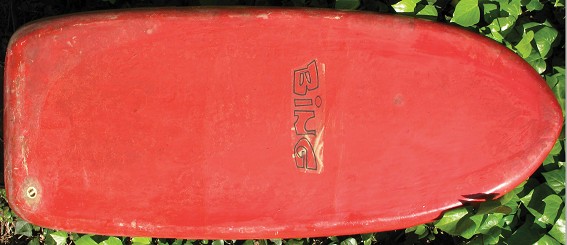
|
Length
:
|
4
|
ft |
10
|
inches | L2 | + 4 ft 10'' |
|
Width
:
|
22
|
inches | ||||
|
Nose:
|
18
|
inches |
Tail:
|
n/a
|
inches | |
|
Thickness
:
|
4
|
inches |
Pod
:
|
21
|
inches | |
|
Nose
Lift :
|
3
|
inches |
Tail
Lift :
|
1/2
|
inches | |
|
Weight
:
|
kilos |
Volume
:
|
litres | |||
|
Concave
tail :
|
13
|
inches (L) x |
14
|
nches (W) x |
1
1/2
|
nches (D) |
| FEATURES
Nose: rounded pin Tail: rounded quare. Deck: flat Bottom: Basically flat with deep concave/channel in the tail. Rails: down with edge Rocker: flat with nose lift. Image right : Tail concave #1. |

|
| DECOR
DECALS: Deck: Bing (late 1960's) Bottom: MARKINGS Deck: none Bottom: A U G A - a black pin line letters down the board. COLOUR Deck: .Red resin gel coat. Bottom: Red resin gel coat. |
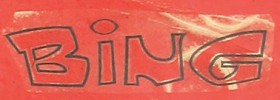 |
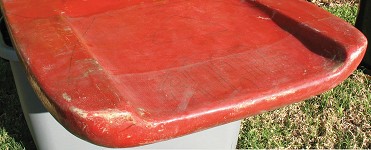 |
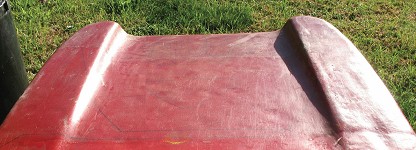 |
|
|
|
They then moved
to Maui in the early 70's and tore the place apart on the Auga Board.
They were in
a movie doing many, many 360's at Lahaina Harbor by Steve Bingham?!
Gerry Lopez was
impressed with their Auga Board.
The board is
4'10" long, 22" wide, 18" nose (12" up), 21" tail, 4" maximum thickness,
rocker- nose 3", tail 1/2", Concave tail 13"
long by 14" width
by 1 1/2" depth, red- color in the resin, a black pin line on the entire
bottom that says "Auga Board", Bing
Surfboards late
60's logo on top.
I showed the
board to Bing Copland at his book signing in 2010 and he did not think
there were any Auga boards with Bing logos that survived!
Please contact
me with stories or other information, thanks.
Vince Ray, Los
Angeles.
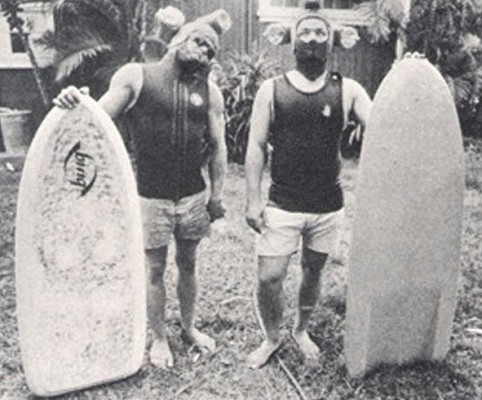 |
"The Auga Men" Maui, early 1970's. Photograph:
|
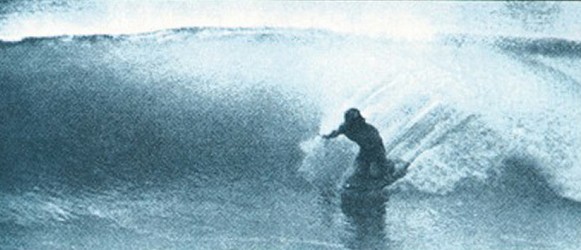 |
"in and out ..." Maui, early 1970's. (#1 of a sequence) Photograph:
|
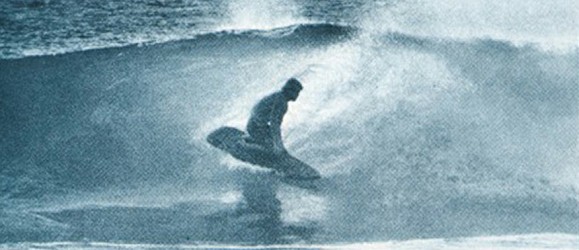 |
" ... and sideways." Maui, early 1970's. (#2 of a sequence) Photograph:
|
| MANUFACTURER
HISTORY
See Holmes : Bing Surfboards (2008). |
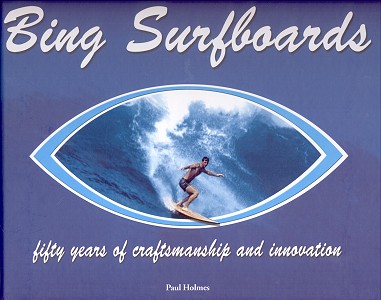 |
The validity of slide
slipping as a manourve was hotly debated and at the 1970 World Contest
it appears that the the judges were not
impressed.
Shaun Tomson
(then 14 years old) noted that at the 1970 World Contest, he and Western
Australia's Ian Cairns:
"were riding side-slipper boards shaped by Ausie legend Midget Farrelly."
-Tomson: Bustin' Down the
Door (2008), page 18.
Although Reno
Abellira and Midget Farrelly rode Side Slipper designs, there are no contest
photographs of them (or others) side slipping.
The situation
is similar in Paul Witzig's Sea of Joy, 1971.
Due to the
lack of suitable wave conditions, the required high skill level, the potential
for confusion in crowed conditions and/or the rejection by
contest officials:
side slipping receeded dramatically.
While the Side
Slipper appeared to be a minor deviation, it did have major design
influence...
- down soft
rails became an industry standard.
- encouraged
research into fin boxes ( by 1972 the Bahne system became an industry standard).
The most successful
(in sales, performance and safety) is Tom Morey's Booggie
Board, 1971.
Pacific Vibration??05 / like woodstock on a wave / rare surf movie
http://www.youtube.com/watch?v=VFG6XrTJhKw
20 s: Steve Barger or Tom Warren (goofyfoot) on a red finfless Bing
Auga board, multiple 360s on left, at Trestles?
52 s: David Nuuhiwa, Twin fin Fish(es) ?, Huntington lefts?
2 m 02 s: Corky Carroll, dark red Hobie Twin fin, lefts, kneel
paddles.
Also
1971 Waves
of Change
MacGillivray Freeman
Films
Re-released in 1973
as Sunshine Sea
Credits for the later on DVD include Steve Barger.
CONDITION:
7.5
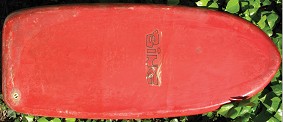
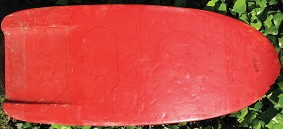
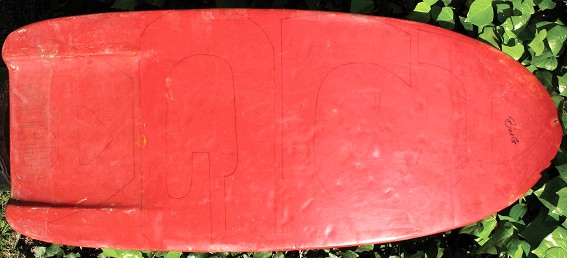

| home | catalogue | history | references | appendix |